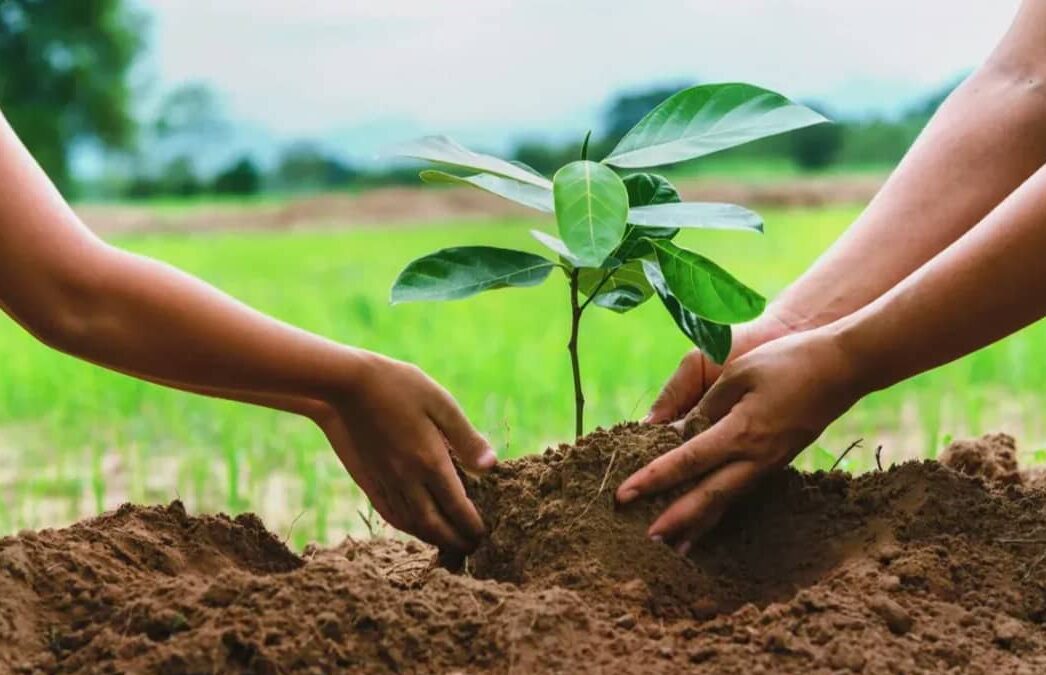WHATSAPP +256 751 725 672
USA/CANADA +1 (888) 279-9907
USA/CANADA/INTERNATIONAL
24/7 Help Support
24/7 Help Support
USA/CANADA [email protected]
All In Africa Safaris Green Spot Campaign: Planting the Seeds of Change, Combating Climate Change Through Responsible Tourism
At All In Africa Safaris, we believe travel is more than an adventure—it’s a chance to leave lasting positive green spot. Our Green spot merges tourism with impactful environmental action, empowering travelers to combat climate change while preserving Uganda’s breathtaking landscapes. By planting trees along scenic routes, public schools, Community hospital to supporting eco-friendly initiatives in communities, every journey becomes a step toward a greener future. Together, let’s shape a sustainable tomorrow with a green spot while exploring the Pearl of Africa.
As part of our Green Spot Campaign, we invite all tourists visiting Uganda to plant a tree along the roadsides leading to key tourist destinations. This simple yet impactful gesture is our way of directly combating climate change while also enhancing the beauty and health of our local landscapes. Tourism roads leading to destinations such as the Rwenzori Mountains National Park provide an opportunity to integrate climate restoration with tourism promotion. These roads can be lined with indigenous trees to sequester carbon, enhance scenic beauty, and attract eco-tourists. For example, tree planting along the routes to popular sites like Queen Elizabeth National Park or Bwindi Impenetrable Forest can create green corridors that improve air quality and biodiversity. Additionally, roadside agroforestry practices can involve local communities in growing crops interspersed with trees, generating income while combating deforestation.

Each tourist planning a visit to Uganda will be requested in advance about the initiative of planting only one tree on their way to tourist destinations in Uganda. Those willing to help in planting a single tree either on their way to or on their way fro. Arrangements will be done early enough so that the exercise takes only 3 to 5 minutes, then the tourists proceed to their target destination without wasting their time, hence leaving green a green spot in Uganda to contribute to global climate change mitigation. Our driver guides will be coordinating and keeping in contact with those respective contact persons based in areas spotted for tree planting along the road reserve, school compounds, churches, and Subcounty compounds located in tourist destination areas.
Restoration projects can boost tourism by creating eco-friendly landscapes that attract visitors. For instance:
Trees absorb carbon dioxide (CO₂), the primary greenhouse gas emitted by cars, during photosynthesis and store it as biomass. A mature tree can absorb about half a metric ton of CO₂ annually. Large-scale reforestation could potentially offset billions of tons of CO₂, equivalent to removing millions of cars from the road.
Trees trap particulate matter (PM) and other pollutants emitted by vehicles on their leaves, reducing harmful air contaminants. Evergreen species, like conifers, are particularly effective as year-round filters for pollutants.
4. Planting trees around Rocky Areas. Planting trees around scenic areas such as rocky landscapes, whether privately owned or public for mountain climbers to have cool atmosphere and can also be linked to mitigating carbon dioxide through the process of photosynthesis. Trees absorb CO2 from the atmosphere, converting it into biomass while releasing oxygen. Mature trees can sequester significant amounts of carbon dioxide annually, making them effective natural climate solutions.
The Green Spot Campaign goes beyond tree planting. By working closely with local village leaders, we help ensure that these trees are cared for by the communities who benefit most from their growth. This partnership not only supports environmental conservation but also fosters economic opportunities for local people through job creation in tree care and maintenance.
Masindi District, where 80% of the land is under sugarcane plantations, faces significant environmental degradation. Restoration efforts can focus on wetland buffers, schools, and government compounds. Agroforestry practices such as Agroforestry with annual crops, Agroforestry with perennial crops, boundary or strip planting, woodlots, and silvopastoral restoration to forest and woodland. Intercropping perennial crops like bananas or coffee with trees can rejuvenate degraded land while supporting livelihoods. Schools and administrative blocks can serve as demonstration sites for urban greening, showcasing the benefits of tree planting in reducing carbon emissions. Voluntary community involvement is crucial for success. Initiatives like offering free seedlings encourage participation in restoring gazetted land. Farmers can adopt boundary planting or woodlots on their land, supported by restored frameworks that incentivize sustainable practices through carbon credits. For example, farmers in Masindi could plant trees along sugarcane plantation boundaries or intercrop with seasonal crops like maize to balance agriculture and forestry.
Climate change affects us all, but through collective action, we can make a significant difference. By incorporating this tree planting initiative into the tourism experience, we are driving a global campaign to mitigate the effects of climate change. Every tree planted helps offset carbon emissions, contributes to biodiversity, and serves as a lasting reminder of the positive power of responsible travel. Awarding carbon credits to existing trees in the private or communal lands for communities to preserve and also providing seedlings for indigenous trees to be planted in replacing of the cut ones
Using biomass models like Kachamba’s helps quantify carbon sequestration from restoration activities. This data can justify investments in eco-tourism infrastructure and conservation efforts. The conversion of the Biomass estimates to carbon and carbon dioxide (CO2) and calculation of uncertainty levels for the project area (Estimated time for this training module/models is two days) The third stage is the calculation of the single tree biomass (weight)in kilograms using the Kachamba model or NBS model. For the Kachamba model, the formula is; Y=X1^b *X2^c Equation 1 Where a,b, and c are regression constants Y is the single above Biomass X1 is DBH X2 Height. The actual formula with values is ABIOM=0.103685*1.91719*H^0.844561
When you travel with All In Africa Safaris, you’re not just visiting a destination—you’re helping preserve it. Together, we can create a positive environmental impact while celebrating the beauty and richness of Uganda. Let’s leave a legacy of green spots that inspire others to travel responsibly and take action against climate change. Ready to plant your tree? Join our Green Spot Campaign on your next Ugandan adventure, and make your travel experience one that leaves the world a little greener. Book your trip today and plant your first tree!






